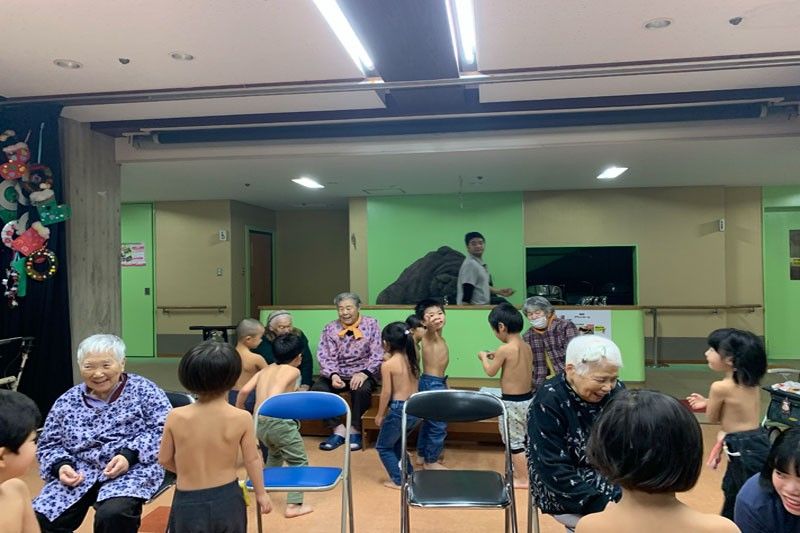Reshaping daycare business with all-in-one solution

EDOGAWA WARD, Tokyo – Japan’s population is rapidly shrinking and the government foresees that in 50 years, the country will lose 30 percent of its 127 million-strong population.
The reasons for this are varied and complex from having fewer young Japanese wanting to get married and have children for social and economic reasons to the more challenging state of the economy and to the still insufficient social and government support for young couples who wish to keep their careers while raising children and taking care of elderly family members.
Regardless of the reasons for what is now considered a demographic crisis in one of Asia’s developed economies, current population trends in Japan show that the fast plummeting birthrate is met by a rapid rise in the number of aging population.
So much so that by 2065, around 34 percent of Japan’s population will be aged 60 and above.
On the macroeconomy level, this puts tremendous pressure on the growth of the workforce who must shoulder new production and sustain the high quality of Japanese society.
As the number of the elderly increases, security programs such as pensions, as well as medical and nursing care are also strained.
At the household level, working couples are confronted with the difficulty of caring for the very young and very old as there are limited options for daycare and institutional care for the elderly.
Local government units are also concerned about preventing the elderly from becoming isolated and abandoned as they age alone in their homes or in the homes of their children.
Despite these constraints, Japan maintains a conservative immigration policy that limits the influx of healthcare and social workers that can staff daycare and homes for the elderly.
Gender equality
The STAR was part of the recently concluded 2019 Asia Pacific Female Journalists Exchange Program hosted by the Gender Equality Bureau Cabinet, Cabinet Office of Japan that gathered 33 women journalists from 12 countries in the region including Japan.
The exchange was meant to be a forum for discussing women’s participation in the Japanese workforce and understanding the issues and challenges confronting it. To date, Japan is still one of the few developed countries struggling with gender equality in the workplace.
In Japan, its is still the norm for many women to take the lead in child and elderly care even if they have jobs of their own. This tends to slow the advancement in their careers and causes disparities in incomes with their male counterparts.
One such facility in Tokyo responds to these challenges through a so-called intergenerational approach. This approach combines care methods for very young children who cannot begin formal schooling yet and the very old.
Kotoen, which is located in Edogawa Ward in Tokyo, is a daycare facility for children aged five months to two years whose parents are both working and a nursing home for elderly men and women 65 years and older.
The facility’s intergenerational approach differs from the services provided by other institutions because it allows children and the elderly to interact daily with the goal of bridging the relationship gap between the two generations.
This way, seniors regain their sense of purpose as they get involved in the lives of the children – such as helping change clothes and diapers – while children gain appreciation for the elderly.
“We wanted to give elderlies a sense of living. When they enter the facility, their purpose was to die. We wanted to give them a different purpose,” said Keiko Sugi, CEO of Kotoen.
Kotoen was first established as a home for the elderly way back in 1962. When its main facility was reconstructed in 1987, it pioneered the intergenerational business model to respond to the increasing need for elderly and child care within a limited space.
To this day, there are several other facilities in Japan that use the intergenerational approach, but Kotoen is widely recognized as a pioneer.
In 2006, it opened another intergenerational facility called Tsubaki that also offers day care services for the mentally challenged aged 18 and above.
In its main facility, the week starts with the elderly meeting children at the gate to welcome them into the new week after spending the weekend with their parents.
“The elderly can build relationships with the children and their parents by saying hello, good morning at the gate because these elderlies will also greet the parents,” said Tomokazu Inoue, director of Kotoen.
During mornings, elderly who are still quite healthy join children for morning exercises. Afterwards, they bond over simple games before the children start their day classes in separate rooms and the elderly pursue their daily schedule of exercise or socialization.
In the afternoon, the elderly will help ease the children for a nap. Elderly women also help the staff change babies’ diapers.
“We have a shortage of nurses in local communities so the elderly are really helping the daycare staff,” Inoue said.
These daily activities are supplemented by other intergenerational programs like those that are seasonal in nature to enable the elderly charges to pass down traditions and customs.
Kotoen also has programs to promote mutual kindness between children and the elderly. During the winter season, for instance, when the risk of infectious diseases prevents joint activities, children and elderly are made to use letters to communicate with each other.
When an elderly charge passes away, the center holds a farewell ceremony which the children can participate in.
“These activities expand the range of human relationships of children, which are often limited to family or school,” Inoue said.
In its almost 32 years of operating the intergenerational approach, Kotoen has produced several graduates who eventually returned to work in the institution as nursery teachers and caregivers. These native social and health workers are aided by non-Japanese nurses and caregivers from the Philippines, Sri Lanka, Nepal and China.
Nonetheless, fewer younger Japanese choose to carve out a career as health workers or social workers in care institutions for the elderly and very young children.
“We find difficulties encouraging young Japanese generations to work as caregivers,” Inoue said.
Challenges
Like many institutions similar to it, Kotoen is faced with challenges of providing services for a highly dependent and care-intensive demographic while keeping its head above water.
It currently derives most of its revenues from direct payments from the families of their charges. The cost of daycare, Sugi said, depends on the household income.
It also receives subsidies from various government social protection systems and some support from the immediate community by way of donation of idle assets, but Sugi said great care must still be done to control the cost and maximize the available resources.
The cost of manpower remains to be the largest component of Kotoen’s expenses, accounting for 72 percent of the total income. The institution, however, gets a respite as it operates tax-free.
With so few young Japanese willing to work as caregivers in such institutions, Kotoen too feels the challenge of retaining staff, Inoue said.
The bigger picture
Kotoen’s functions are largely in line with the Japanese government’s promotion of the “aging in place” system in which the elderly continue living in their homes supported by social services and an integrated community care system.
Such community-based care systems for seniors are supported by the provision of continuous service for health care and long term care in the region where the elderly live.
This system is preferred rather than having the elderly move in with their children who may live and work in big cities.
Kotoen’s Tsubaki facility also offers care in residential settings by deploying certified home care helpers in the houses of the elderly who need help in preparing meals, changing clothes, bathing and visiting doctors.
These home helpers also assist in the cleaning of the house and grocery shopping.
Other than responding to the challenges posed by a rapidly aging population to Japan’s economy, institutions like Kotoen also respond to immediate social challenges currently faced by the very young and the very old.
- Latest

























